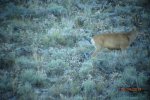I'm wondering if there's a good thread or article on the basics of camera setup for digiscoping. I can take okay pictures without vignetting, know about using the timer to reduce movement and the really basic stuff so more specifically I'm looking for advice on camera settings that should be used for different conditions. I've got Sony RXII and a Leica 20x50 w/85mm.
Thanks!
Thanks!



